How to Draw a Hexagon
There are two main approaches to drawing a hexagon (a regular six-sided polygon) in technical drawing:
Constructing a Hexagon Inscribed in a Circle
Start by drawing a circle with its center at point O and a radius of length r.
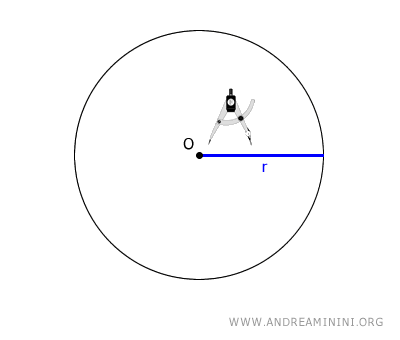
Align your ruler horizontally on the page, and using a 90-degree set square, draw a diagonal AB that is perpendicular to the page and passes through the center O of the circle.
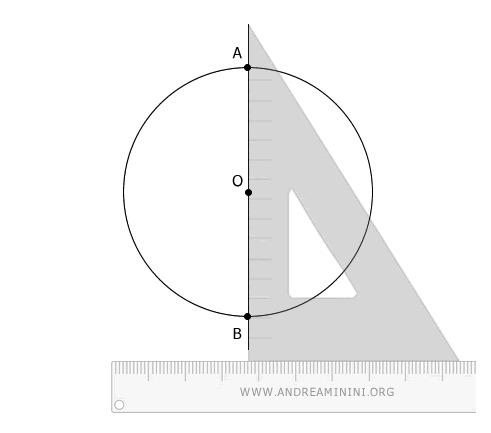
Place the compass point on A, and with a slightly larger radius, draw a light arc or two small arcs at the same height as the center O of the circle.
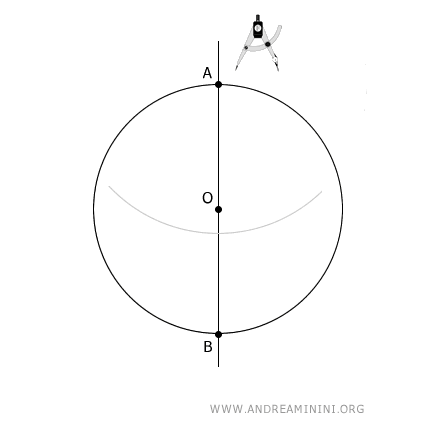
Now, place the compass point on B and draw another arc with the same radius, ensuring it intersects the first one.
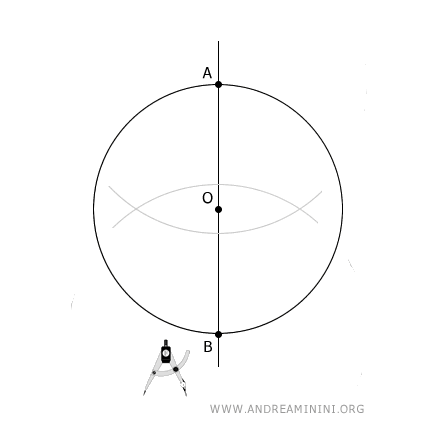
Draw a straight line through the points where the arcs intersect.
This will give you the diagonal CD, which is perpendicular to the first diagonal.
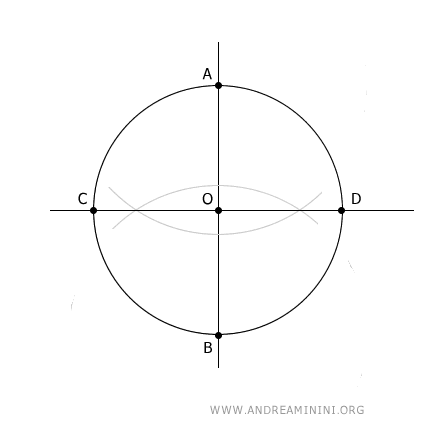
Note: To clarify how to draw the perpendicular diagonal, I’ve shown two arcs here. In practice, you can simply draw four small light arcs with the same radius that intersect in pairs at the same height as the center O of the circle. The final result is the same, but the drawing will be cleaner.
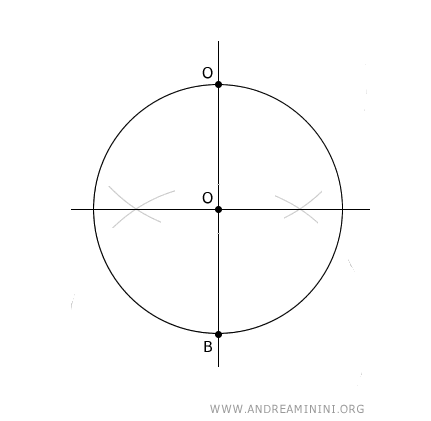
The two diagonals create four right angles, marking four points A, B, C, D on the circle.
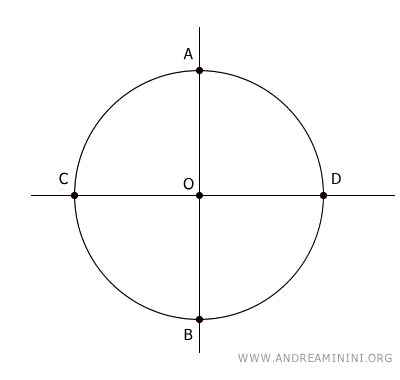
Place the compass point on A and, with a radius equal to OA, draw a semicircle.
This will identify points E and F where it intersects the circle.
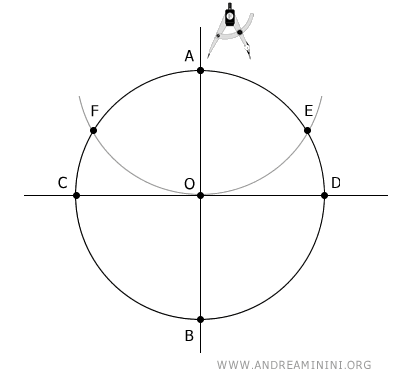
Next, place the compass point on B and, with the same radius (OB = OA), draw another semicircle.
This will identify points G and H where it intersects the circle.
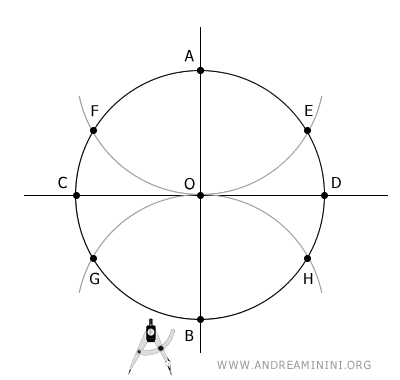
Finally, connect the points AF, FG, GB, BH, HE, and AE.
The end result is a hexagon.
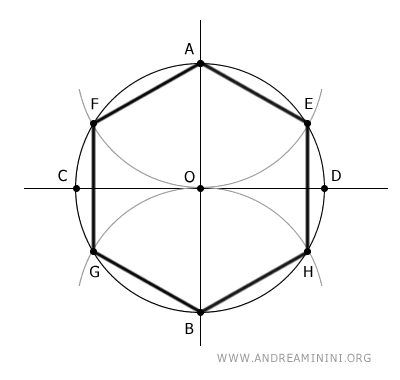
And there you have it!
